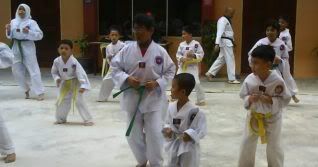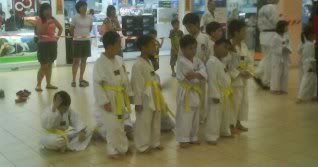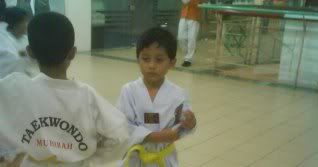But is it the right martial art for you?
Or is it just a bunch of hype?
Let's look into the history and see just exactly what taekwondo really is :
Taekwondo (also spelled tae kwon do or taekwon-do) is a martial art originating in Korea. An amalgamation of Chinese, Japanese, and traditional Korean fighting styles, taekwondo has become the world's most commonly practiced martial art, and is the national sport of Korea as well as an Olympic sporting event.
In Korean, derived from hanja, tae means "to strike or smash with the foot"; kwon means "to strike or smash with the hand"; and do means "art of" or "way of". Hence, taekwondo is loosely translated as "the art of hand and foot" or "the way of the foot and the fist". Taekwondo's popularity has resulted in the divergent evolution of the art.
 Image via Wikipedia
Image via WikipediaBut more practially speaking, the art really came into its own after the Korean War. The South Korean president at that time ordered that all the martial arts schools be unified and train under the same organization.
Taekwondo also became the countries national sport as well. As other martial arts before it, taekwondo moved its way over to North America and started to catch on and become very popular.
This art is distinct amongst the other traditional arts via the fact that it places a major emphasis on kicking and defending yourself using kicking techniques. Once you learn these techniques correctly, they can become very deadly and are a very effective form of self-defense.
Taekwondo also puts a lot of focus on conditioning and stretching. Because the legs are the largest muscle in the body, you need to make sure they are properly stretched at all times and conditioned.
Because taekwondo is an Olympic sport, most schools focus on sparing and tournament fighting. This is a big part of most schools. The downside of this is, the style of fighting in tournaments is different then the style you would use in a self-defense situation.
Is taekwondo better then karate or the other traditional martial arts?
The focus is different as more emphasis is placed on kicking and tournaments. But any martial art is only as good as the person training in it.
The best way to discover if it is for you is to go and take a few free classes at schools in your area and see for yourself if taekwondo is for you!


























